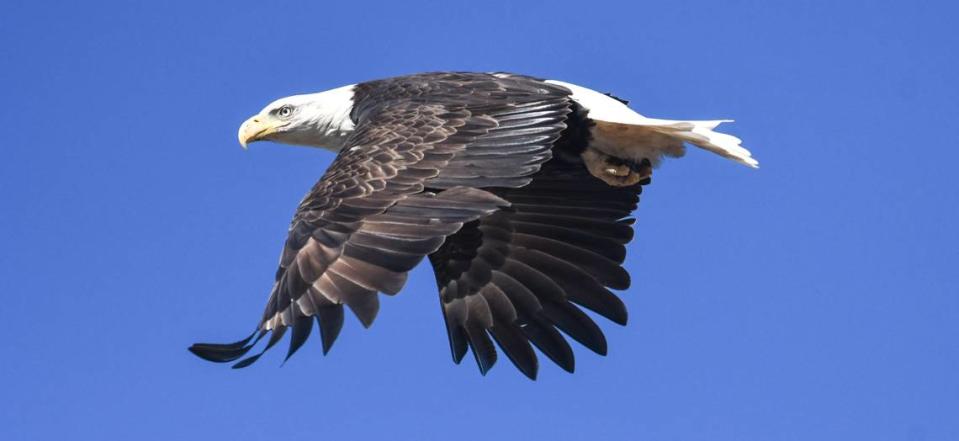How average citizens are using a free app to help protect the American Bald Eagle | Opinion
The U.S. Fish and Wildlife Service ran into a problem when it came time to count Bald Eagles just as the agency’s planes were grounded for repairs two years ago. So it tried something new: tapping into a citizen science network.
The experiment was a rousing success. The birders network had a vast storehouse of data on where eagles live and breed, based on the listings of some 180,000 people. The survey ended up showing a big jump in the nation’s eagle population. It also showed the important contribution average people can make in a field long limited to scientists and wildlife officers.
Opinion
We spent the last two years traveling 25,000 miles researching a book on bird conservation at a time nearly a third of North America’s bird population has withered away over the past 50 years. Half of all species are now in decline.
Our travels gave us a close-up look at the many promising missions that counter these pressures. Researchers are creating smaller technologies to track migrations, using sound recordings to analyze where birds get into trouble. Advances in genomics could bring extinct species back to life.
But among the most intriguing developments is the outsized role anyone can play in one of the environmental challenges of our times, simply while walking in the woods with a smartphone.
The eagle count is a good example of how this works: The citizen science project, started two decades ago by the Cornell Lab of Ornithology and the Audubon Society, has grown to include 700,000 people, with California by far the leading contributor. Birders record the species they see and hear on a free app called eBird, which Cornell turns into precise maps — built on a billion bits of data so far — of how birds move around the globe.
The Bald Eagle is an especially popular target for birders. Since nearly going extinct from pesticides in the mid-1900s, the eagle has made a resounding comeback. That latest census found more than 300,000 birds have spread to every state on the continent.
We heard in interviews with more than 300 people in all stages of the bird world that the next decade or so will be a pivotal time. Plenty is at stake in trying to halt these declines since birds play a central role in the health of the environment: They’re nature’s workhorses, spreading seeds, pollinating thousands of plants, eating insects by the tons, fertilizing the land and seas and providing the daily soundtrack of the outdoors.
The largest project in the world using sound and artificial intelligence to study wildlife is winding up in the Sierra Nevada range, where the California Spotted Owl is spread out across millions of acres. A consortium of researchers, foresters and timber companies has scattered sound recorders throughout the mountains., to track the birds’ locations, pinpoint threats and gradually stabilize their numbers.
In the Central Valley, Point Blue Conservation Science and The Nature Conservancy pays farmers to leave water on their fields for the peak weeks of migration, creating what they think of as “pop-up” stopovers for birds.
Some of the most forward-looking experiments are borrowing advances in human genetics to apply to birds. California-based nonprofit Revive & Restore has landed a multi-million-dollar contribution to try to bring the long-extinct Passenger Pigeon back to life.
These and dozens of other projects are dependent on scientists, wildlife agencies and university researchers. But average people can play a part in this work as never before, by supporting conservation, creating bird-friendly yards and businesses and signing up to join hundreds of thousands of people contributing by simply watching birds.
Anders and Beverly Gyllenhaal are authors of “A Wing and a Prayer: The Race to Save our Vanishing Birds” and publish the website “FlyingLessons.US: What we’re learning from the birds.”


